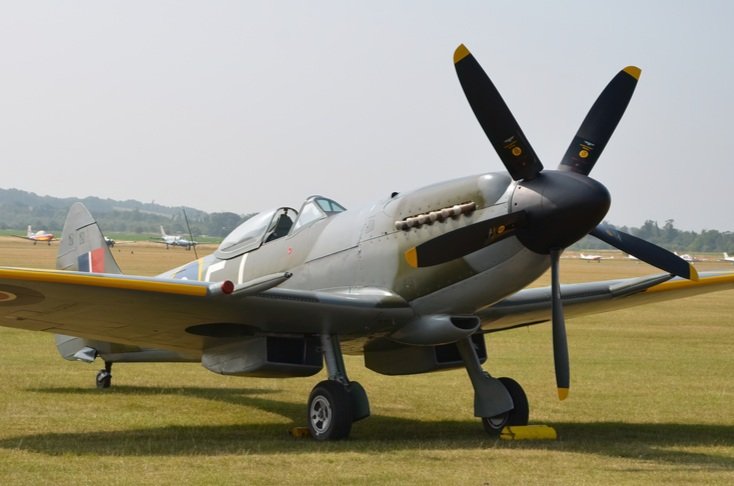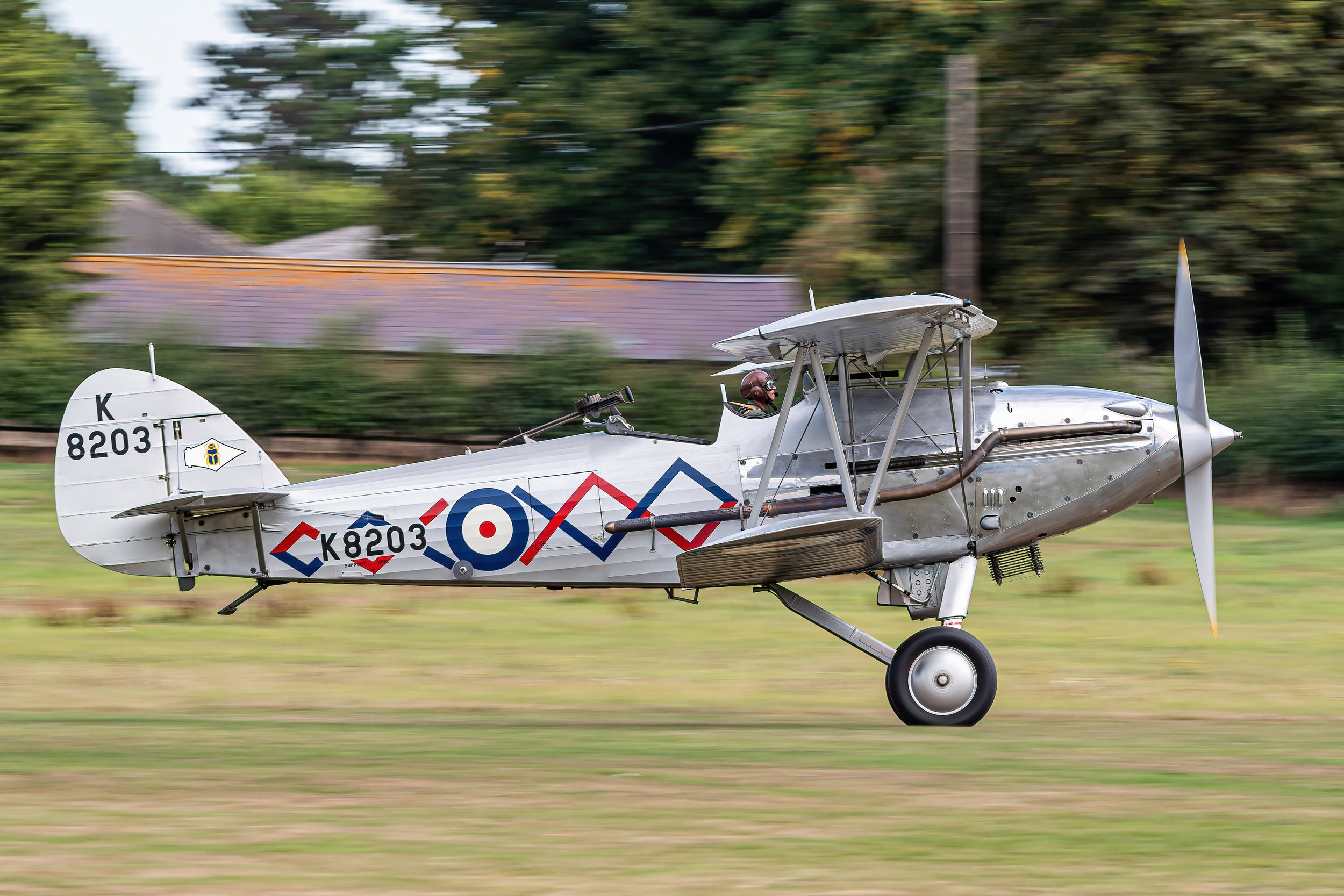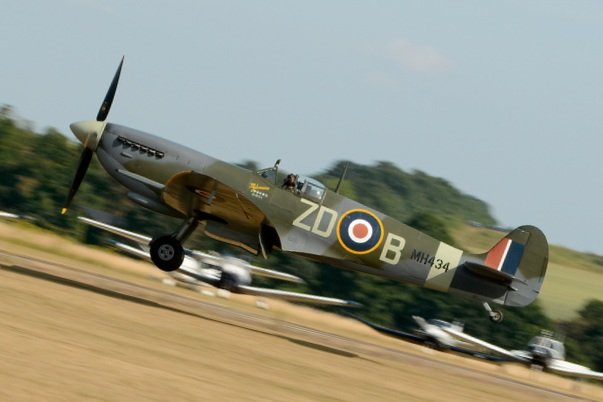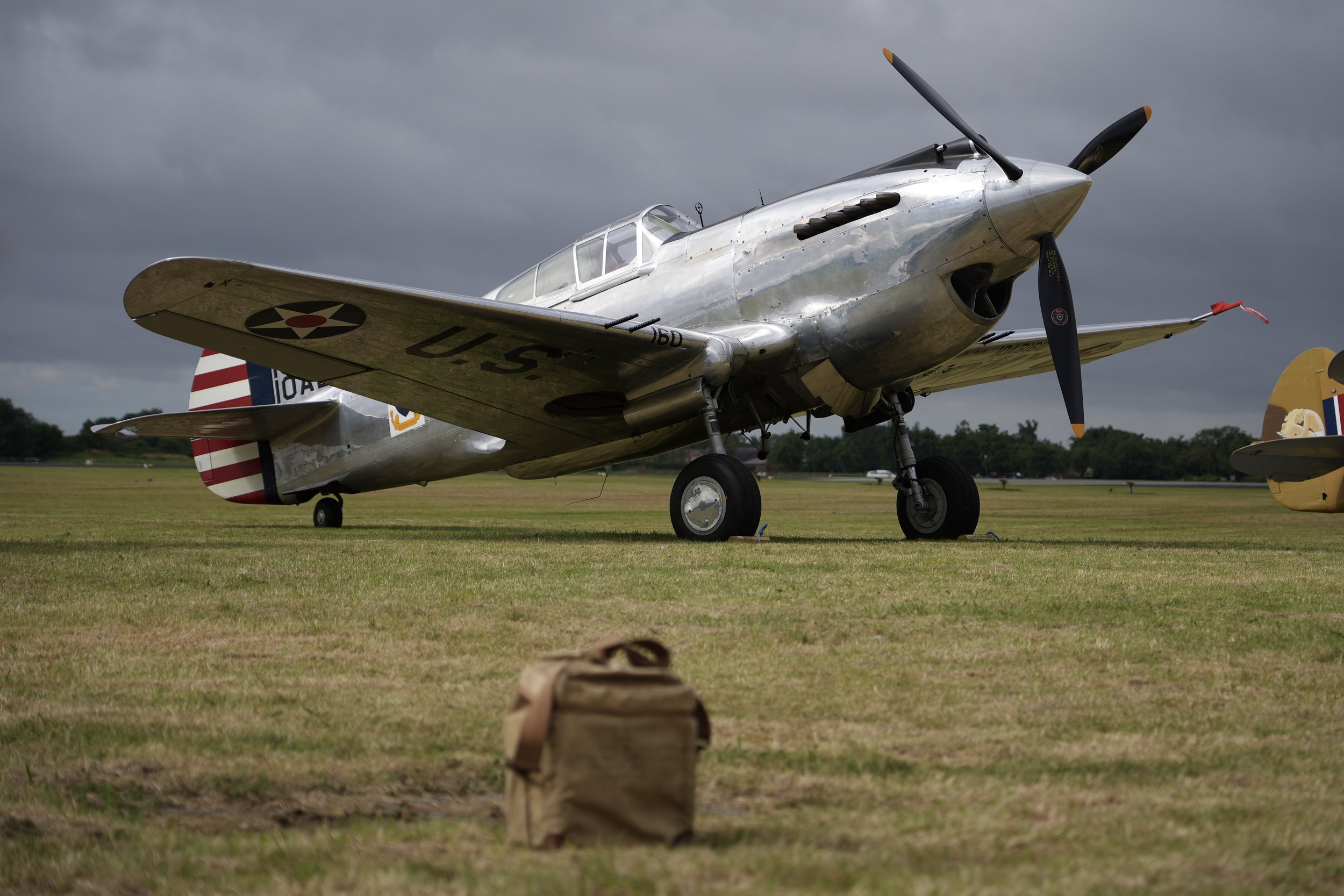Gladiator G-AMRK
Year built
1937
Aircraft
Gladiator I
Base
Old Warden Airfield
Owned and operated by the Shuttleworth Collection. L8032 was the last production Gladiator I built in 1937 but not actually assembled until 1938. In 1948 it, together with Gladiator II N5903, was bought by Glosters. In 1950 the two were delivered to Air Service Training for use as instructional airframes at Hamble and Ansty. When Ansty closed the aircraft were bought by Viv Bellamy for a nominal sum.
L8032 was restored using the engine from N5903 and flew again as G-AMRK. L8032 was bought back by Glosters in 1953 and in 1956 they decided to put it back to full military specification in 72 Squadron markings, albeit with the fictitious serial K8032. When Gloster Aircraft closed the Gladiator was presented to the Shuttleworth Collection for safe-keeping on 7th November 1960. In 2007 it re-appeared as 'K7985' of 73 Squadron RAF, representing an aircraft flown by the WW2 Ace Cobber Kain at the 1937 Hendon Air Pageant.
| Back to Top |
Gloster Gladiator I
The Gloster Gladiator is a British-built biplane fighter. It was used by the Royal Air Force (RAF) and the Fleet Air Arm (FAA) (as the Sea Gladiator variant) and was exported to a number of other air forces during the late 1930s.
Developed privately as the Gloster SS.37, it was the RAF's last biplane fighter aircraft and was rendered obsolete by newer monoplane designs even as it was being introduced. Though often pitted against more formidable foes during the early days of the Second World War, it acquitted itself reasonably well in combat.
The Gladiator saw action in almost all theatres during the Second World War, with a large number of air forces, some of them on the Axis side. The RAF used it in France, Norway, Greece, the defence of Malta, the Middle East, and the brief Anglo-Iraqi War (during which the Royal Iraqi Air Force was similarly equipped). Other countries deploying the Gladiator included China against Japan, beginning in 1938; Finland (along with Swedish volunteers) against the Soviet Union in the Winter War and the Continuation War; Sweden as a neutral noncombatant (although Swedish volunteers fought for Finland against USSR as stated above); and Norway, Belgium, and Greece resisting Axis invasion of their respective lands.
South African pilot Marmaduke "Pat" Pattle was the top Gladiator ace with 15 victories with the type.
During the 1920s, Britain's air defences had been based around interceptor aircraft capable of flying only for short ranges and at speeds of 150 to 200 miles per hour (240 to 320 km/h), but by 1930, figures within the Air Ministry were keen to supersede these aircraft. In particular, some dissatisfaction had arisen with the level of reliability experienced with the 'one pilot, two machine guns' design formula previously used; the guns were often prone to jams and being unreliable. The Air Ministry's technical planning committee formulated Specification F.7/30, which sought a new aircraft capable of a maximum speed of at least 250 mph (400 km/h), an armament of no fewer than four machine guns, and such handling that same fighter could be used by both day and night squadrons. Gloster being already engaged with the development of the Gloster Gauntlet, did not initially respond to the specification, which later proved to be beneficial.
The specification had also encouraged the use of the new Rolls-Royce Goshawk evaporatively cooled inline engine; many of the submissions produced by various aviation companies in response accordingly featured the Goshawk engine. However, the Goshawk engine proved to be unreliable, mainly due to its overcomplex and underdeveloped cooling system, and unsuited to use on fighter aircraft and this outcome stalled the development of the aircraft intended to use it. A further stumbling point for many of the submitted designs was the placement of the machine gun breeches within the arm's reach of the pilot. At the same time, the development of monoplane fighters such as the Hawker Hurricane and Supermarine Spitfire cast doubt over the future viability of the requirement altogether.
Gloster recognised that instead of developing an all-new design from scratch, the existing Gauntlet fighter could be used as a basis for a contender to meet Specification F.7/30. Development of what would become the Gladiator began as a private venture, internally designated as the SS.37, at Gloster, by a design team headed by H.P. Folland, who soon identified various changes to increase the aircraft's suitability to conform with the demands of the specification. Making use of wing-design techniques developed by Hawker Aircraft, the new fighter adopted single-bay wings in place of the two-bay wings of the Gauntlet, and two pairs of interplane struts were also dispensed with as a drag-reduction measure. The Bristol Mercury M.E.30 radial engine, capable of generating 700 hp (520 kW), was selected to power the SS.37, which provided a performance boost over the preceding Gauntlet. Another design choice was the fitting of a cantilever main undercarriage, which incorporated Dowty internally sprung wheel struts.
In spring 1934, Gloster embarked on the construction of a single SS.37 prototype. On 12 September 1934, the SS.37 prototype conducted its maiden flight, piloted by Gloster chief test pilot Gerry Sayer. Initially powered by a 530 hp (400 kW) Mercury IV engine, the prototype was quickly re-equipped with a more powerful 645 hp (481 kW) Mercury VIS engine. During flight tests, the prototype attained a top speed of 242 mph (389 km/h; 210 kn) while carrying the required four .303 in (7.7 mm) machine guns (two synchronised Vickers guns in the fuselage and two Lewis guns under the lower wing). According to aviation author Francis K. Mason, the Air Ministry were sceptical about the aircraft achieving such performance from a radial engine design, so funded a protracted series of evaluation trials.
On 3 April 1935, the prototype was transferred to the RAF, receiving the designation K5200, and commenced operational evaluations of the type. Around the same time, Gloster proceeded to plan a further improved version, featuring an 840 hp (630 kW) Mercury IX engine, a two-blade wooden fixed-pitch propeller, improved wheel discs, and a fully enclosed cockpit. K5200 was later used to trial modifications for production aircraft, such as the addition of a sliding hood for the pilot.
In June 1935, production plans for the aircraft were proposed; two weeks later, a production specification, Specification F.14/35, had been rapidly drawn up, partially prompted by events in continental Europe, such as the invasion of Abyssinia by Fascist Italy and the rise of Adolf Hitler to power in Germany, in response to which the British government mandated an urgent expansion of the RAF to counter the emerging threats. This culminated in an initial order for 23 aircraft. On 1 July 1935, the aircraft formally received the name, Gladiator.
Manufacturing of the Gladiator was started at Gloster's Hucclecote facility. Production of the initial batch was performed simultaneously, leading to many aircraft being completed around the same time. On 16 February 1937, K6129, the first production Gladiator, was formally accepted by the RAF; on 4 March 1937, K6151, the last aircraft of the initial batch, was delivered. In September 1935, a follow-up order of 180 aircraft was also received from the Air Ministry; this order had the proviso that all aircraft had to be delivered before the end of 1937.
The first version, the Gladiator Mk I, was delivered in July 1936, becoming operational in January 1937. The Mk II soon followed, the main differences being a slightly more powerful Mercury VIIIAS engine with Hobson mixture control boxes and a partly automatic boost-control carburettor, driving a Fairey fixed-pitch three-blade metal propeller, instead of the two-blade wooden one of the Mark I. All MK II Gladiators also carried Browning 0.303-inch machine guns (licence-manufactured by the BSA company in Birmingham) in place of the Vickers-Lewis combination of the MK I. A modified Mk II, the Sea Gladiator, was developed for the Fleet Air Arm, with an arrestor hook, catapult attachment points, a strengthened airframe and an underbelly fairing for a dinghy lifeboat, all for operations aboard aircraft carriers. Of the 98 aircraft built as, or converted to, Sea Gladiators, 54 were still in service by the outbreak of the Second World War.
The Gladiator was the last British biplane fighter to be manufactured, and the first to feature an enclosed cockpit. It possessed a top speed of about 257 mph (414 km/h; 223 kn), yet even as the Gladiator was introduced, it was already being eclipsed by new-generation monoplane fighters, such as the RAF Hawker Hurricane and Supermarine Spitfire, and the Luftwaffe Messerschmitt Bf 109. In total, 747 aircraft were built (483 RAF, 98 RN), with 216 being exported to 13 countries, some of which were from the total allotted to the RAF. Gladiators were sold to Belgium, China, Egypt, Finland, Free France, Greece, Iraq, Ireland, Latvia, Lithuania, Norway, Portugal, South Africa, and Sweden.
| Back to Top |







| Back to Top |

































